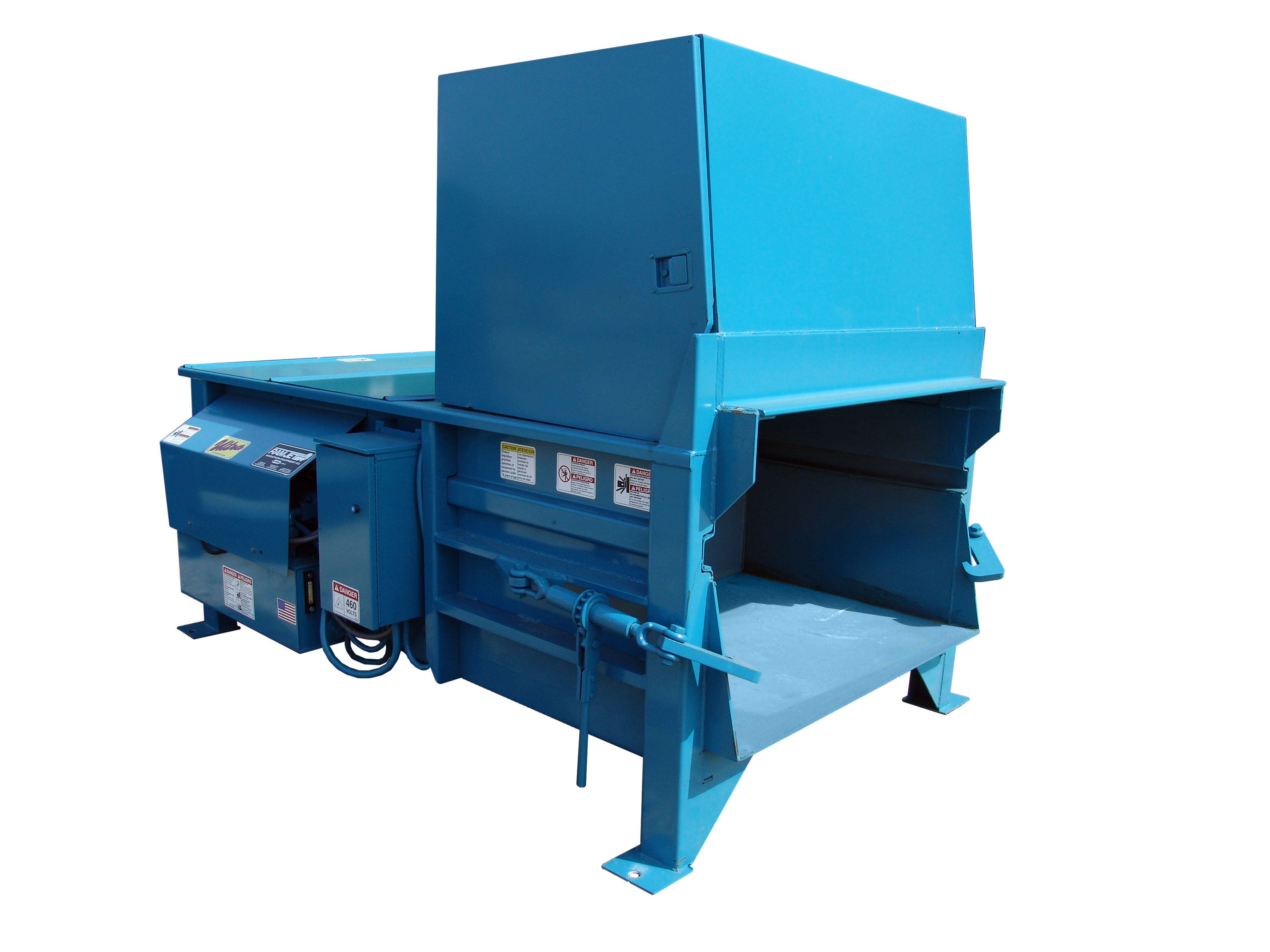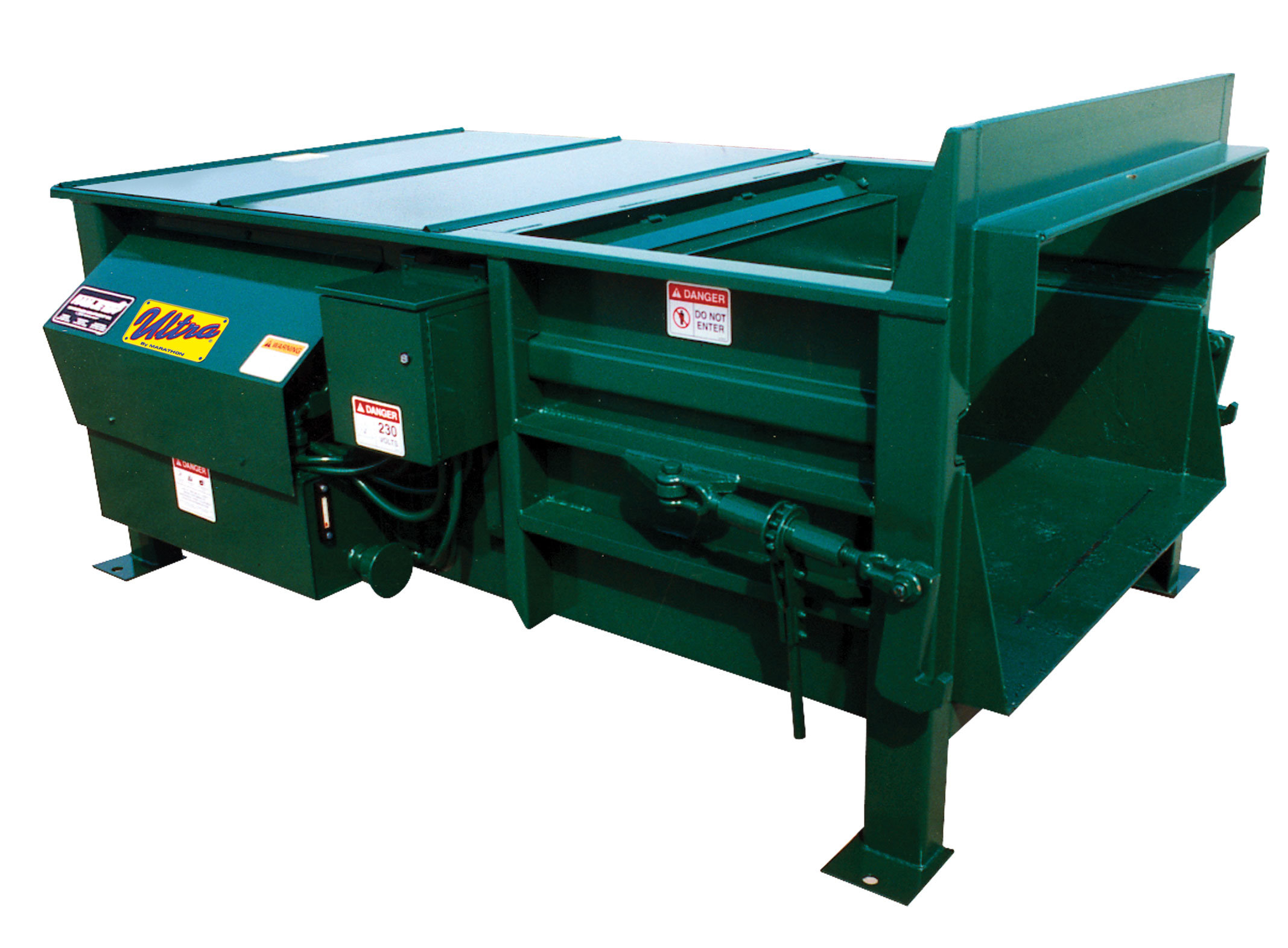A straightforward guide to maintaining Commercial trash compaction equipment
Recognizing the Various Usages of Waste Tools in the Recycling Market
The recycling sector depends heavily on specialized waste tools to optimize handling and recuperation. Each tool, from shredders to balers, offers a distinctive purpose that improves overall performance. Understanding these functions is vital for enhancing sustainability initiatives. Commercial garbage compaction equipment. As technology advances, new technologies arise, guaranteeing to change standard techniques. This development increases vital inquiries about the future of waste administration and its effect on ecological preservation. What modifications exist in advance for this vital sector?
The Function of Shredders in Material Handling
Shredders play a crucial duty in the reusing sector by successfully refining different sorts of waste materials. These makers are made to reduce large products, such as plastics, metals, and natural waste, into smaller sized, manageable items. This dimension decrease is important for subsequent recycling processes, as it permits less complicated handling and sorting. In addition to helping with recycling, shredders improve security by reducing the threat of injury connected with taking care of large waste things.
Shredders contribute to ecological sustainability by making sure that products are processed in a method that takes full advantage of source healing. They can deal with a varied series of materials, making them functional devices in waste monitoring facilities. The effective operation of shredders not only streamlines the reusing procedure but likewise increases the total effectiveness of waste diversion initiatives, advertising a circular economy. Their significance in product processing can not be overemphasized, as they function as a foundational action towards lasting waste management methods.

Just How Balers Enhance Effectiveness in Waste Monitoring
Balers greatly enhance effectiveness in waste administration by condensing various materials into bales, which simplifies storage space and transportation. By pressing recyclables such as cardboard, plastics, and metals, balers significantly decrease the quantity of waste. This compression not only takes full advantage of area in reusing facilities but additionally minimizes the number of journeys called for to deliver products, resulting in reduced fuel prices and reduced environmental influence.
Balers contribute to improved safety in waste administration procedures. Portable bales are simpler to stack and deal with, reducing the risk of accidents connected with loosened materials. The uniform size of bales allows for much more effective packing and unloading processes, improving procedures within reusing facilities. Furthermore, balers can improve the overall high quality of recyclables, as appropriately compressed products are less most likely to be contaminated. In general, balers play a necessary function in optimizing waste monitoring methods, promoting sustainability in the reusing industry.
Conveyor Equipments: Enhancing the Recycling Refine
Integrating innovative equipment like balers considerably boosts waste management procedures, yet the performance of the reusing procedure is further enhanced with the use of conveyor systems. These systems play an essential duty in the seamless transport of products within recycling centers. By assisting in the movement of different waste types, conveyor systems reduce right here hands-on handling and minimize the threat of contamination during the recycling procedure.
Conveyor systems can be personalized to fit the unique formats and functional requirements of recycling facilities. Their capability to run constantly enables a stable circulation of materials, enhancing efficiency and guaranteeing that refining and sorting equipment obtains a regular supply.
Geared up with functions like adjustable speeds and automated controls, conveyor systems can enhance the circulation of products, greatly boosting overall effectiveness (Commercial garbage compaction equipment). These systems are crucial in contemporary recycling operations, enhancing procedures and contributing to effective waste administration.
Sorting Machines: The Secret to Material Healing
Arranging machines are crucial elements in the reusing market, substantially improving the efficiency of product healing. These devices play a crucial role in the splitting up of different recyclable products, enabling a streamlined process that makes the most of resource removal. By utilizing sophisticated modern technologies, such as optical sensing units and air classifiers, sorting equipments can identify and categorize materials based upon their dimension, composition, and weight. This ability ensures that metals, plastics, and paper products are efficiently separated, reducing contamination and boosting the high quality of recycled output.
The procedure of sorting equipments considerably lowers the reliance on manual work, which can be both vulnerable and time-consuming to mistakes - Commercial garbage compaction equipment. Furthermore, the automation given by these equipments speeds up the general recycling process, resulting in higher throughput and increased functional efficiency. Subsequently, arranging equipments are crucial in accomplishing sustainable waste administration goals, making it possible for the reusing sector to efficiently recoup useful products while reducing landfill dependence

Innovations in Waste Devices for a Lasting Future
Recent innovations in waste tools are driving the recycling sector toward a much more lasting future. Innovations such as automated sorting systems, which use synthetic intelligence and device discovering, enhance performance by precisely identifying and dividing recyclables. This causes greater healing rates and reduced contamination. Additionally, developments in compacting innovation enable for a lot more effective transport of products, decreasing carbon footprints throughout transit.
Advancements in shredding equipment enhance the processing of complex materials, making it possible for the recycling of items that were as soon as regarded non-recyclable. The combination of renewable resource sources, like solar energy, in waste handling facilities even more adds to sustainability goals. Furthermore, advancements in waste-to-energy modern technologies and biodegradable materials are reshaping the landscape of waste monitoring. Collectively, these developments signify a transformative change within the reusing industry, promoting not only environmental management yet likewise financial practicality for future generations.
Frequently Asked Questions
What Kinds of Materials Can Waste Devices Take Care Of?
The kinds of materials waste devices can deal with include plastics, metals, paper, glass, and natural waste. Each equipment kind is made for details products, enhancing performance and performance in arranging and processing numerous waste streams.
Just How Typically Should Waste Devices Be Kept?

Are There Security Worry About Using Waste Equipment?
Safety worries with utilizing waste devices consist of potential injuries from mechanical malfunctions, direct exposure to unsafe products, and insufficient training. Correct maintenance, regular examinations, and worker education are vital to alleviate these threats effectively in any setting.
What Is the Ordinary Life Expectancy of Recycling Tools?
The typical life-span of reusing tools normally ranges from 10 to twenty years, this contact form depending upon aspects such as usage strength, maintenance practices, and technical advancements, which can considerably influence durability and efficiency with time.
How Is Waste Tools Powered in Recycling Facilities?
Waste equipment in reusing centers is commonly powered by electrical energy, though some makers might use alternative visit their website power sources like gas or diesel. This power enables effective processing and transformation of products for reusing functions.
Shredders play a vital role in the reusing market by successfully refining different types of waste materials. They can deal with a diverse variety of products, making them flexible devices in waste administration centers. Balers greatly enhance efficiency in waste administration by compacting different products right into bundles, which simplifies storage and transport. The kinds of materials waste equipment can handle include plastics, steels, paper, glass, and natural waste. Security worries with utilizing waste equipment consist of prospective injuries from mechanical breakdowns, direct exposure to dangerous materials, and insufficient training.